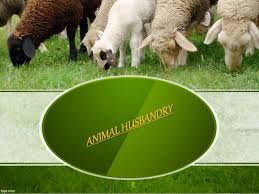Exotic Breeds – Notes On Animal Husbandry – For W.B.C.S. Examination.
Centuries of selective breeding, accelerated in the later part by the use of modern breeding tools, has helped in evolving some of the most outstanding dairy breeds of cattle in western countries. These breeds maintains a very high standard with respect to milk production, age at maturity and breeding efficiency. They are given adequate feeding and good management so that they can express themselves fully. In India some of these breeds have introduced for cross-breeding to raise the genetic potential of our cattle for milk production. Slowly, this practice is becoming popular and has started to have impact on our dairying. Some important exotic breeds are described here.Continue Reading Exotic Breeds – Notes On Animal Husbandry – For W.B.C.S. Examination.
1. Jersey
This breed was developed on the island of Jersey in British Channel. Jersey cows vary in colour from light red to black and from white spotted to solid in marking. The muzzle is black with a light encircling ring. Cows are comparatively small in size with well developed and properly placed udders. Teats are squarely placed. Average lactation yield of this breed is 4,055 kg. Milk is light yellow with 5.4% fat. Adult cows weigh about 500 kg and males 600 to 700 kg. Early maturity of heifers produces calf between to 30 months and have a regular calving interval, thereafter 12 – 13 months.
2. Holstein Friesian
This breed originated in Holland, particularly in the provinces of North Holland and West Fineland. Animals of this breed are ruggedly built and possess large feeding capacities and udders. They are alert and vigorous. Holstein is black and white in colour and the amount of black and white may vary from white with a few black spots to almost black. The switch is always white.
The breed is widely distributed in Western Europe, England, Canada, Australia, America and South Africa. This breed is considered to be the best milk producer in the world. The cows are quiet and docile but the bulls may be vicious.
They are heavy milk producers averaging 6,500 kg per lactation. The fat percentage in their milk is generally low (3.0 to 3.5 per cent). The animals are large in size and the adult males and females weigh about 800 to 900 kg and 500 to 650 kg, respectively.
Under tropical conditions they may not perform well since they are least heat tolerant. They can be maintaining production even below 32o F but temperatures above 82o F depresses milk production.
3. Brown Swiss
This breed from Switzerland originated on the east and north of Alps. But now, they are seen in most parts of the world. The colour varies from a light fawn to almost black. the muzzle and a stripe along the backbone are light in colour. The nose, switch and horn tips are black. The animals are fairly large in size and have extremely strong constitution and hardiness. The breed is triple purpose animal in the homeland i.e. milk, meat and draught. Cows of this breed have large bones, large heads which are usually dished. The breed is quiet, docile and easily manageable. Calves are nearly white at birth and become darker with the age. Adult males weigh about 700 to 800 kg and adult females about 500 to 600 kg. On an average a Brown Swiss cow produces 5,250 kg of milk which contains 4.2 % fat. Females calve for the first time between 28 to 30 months per lactation and thereafter maintain a regular calving interval of 13 to 14 months.
4. Ayrshire
This breeds takes its name from the country of Ayr and South west Scotland. where it was developed. The animals are cherry red to brown in colour and are of medium size. Ayrshire is considered by many as the most beautiful dairy breed. This is a relatively nervous breed and is known for its hardiness and good grazing ability. The animals are strong and robust. The udder is strongly and evenly balanced and well shaped. They have long horns which are trained up wards.
The average milk production of this breed cows is 4,840 kg per lactation. The milk contains about 4.0 % fat. This is an early maturing (first calving at 20-30 months age) and regular breeder (interval 13 to 14 months).
5. Guernsey
This breed was developed and named from one of the islands between France and England in the English Channel. The animals have a shade of fawn with white markings clearly defined. Skin has golden yellow colour pigmentation. Usually, markings are dominant on the face, legs, switch and flanks. The nose may be creamy or buff coloured. Cows of this breed are alert and active. They are easy to handle and manage. Generally milk has golden colour.
Adult males weigh around 600 to 800 kg and adult females about 400 to 500 kg. Good herds produce on a an average 4000 kg milk per lactation. The milk contains about 5% fat. This is also an early maturing breed.
Our own publications are available at our webstore (click here).
For Guidance of WBCS (Exe.) Etc. Preliminary , Main Exam and Interview, Study Mat, Mock Test, Guided by WBCS Gr A Officers , Online and Classroom, Call 9674493673, or mail us at – mailus@wbcsmadeeasy.in
Visit our you tube channel WBCSMadeEasy™ You tube Channel
Please subscribe here to get all future updates on this post/page/category/website



 Toll Free 1800 572 9282
Toll Free 1800 572 9282  mailus@wbcsmadeeasy.in
mailus@wbcsmadeeasy.in


















































































































